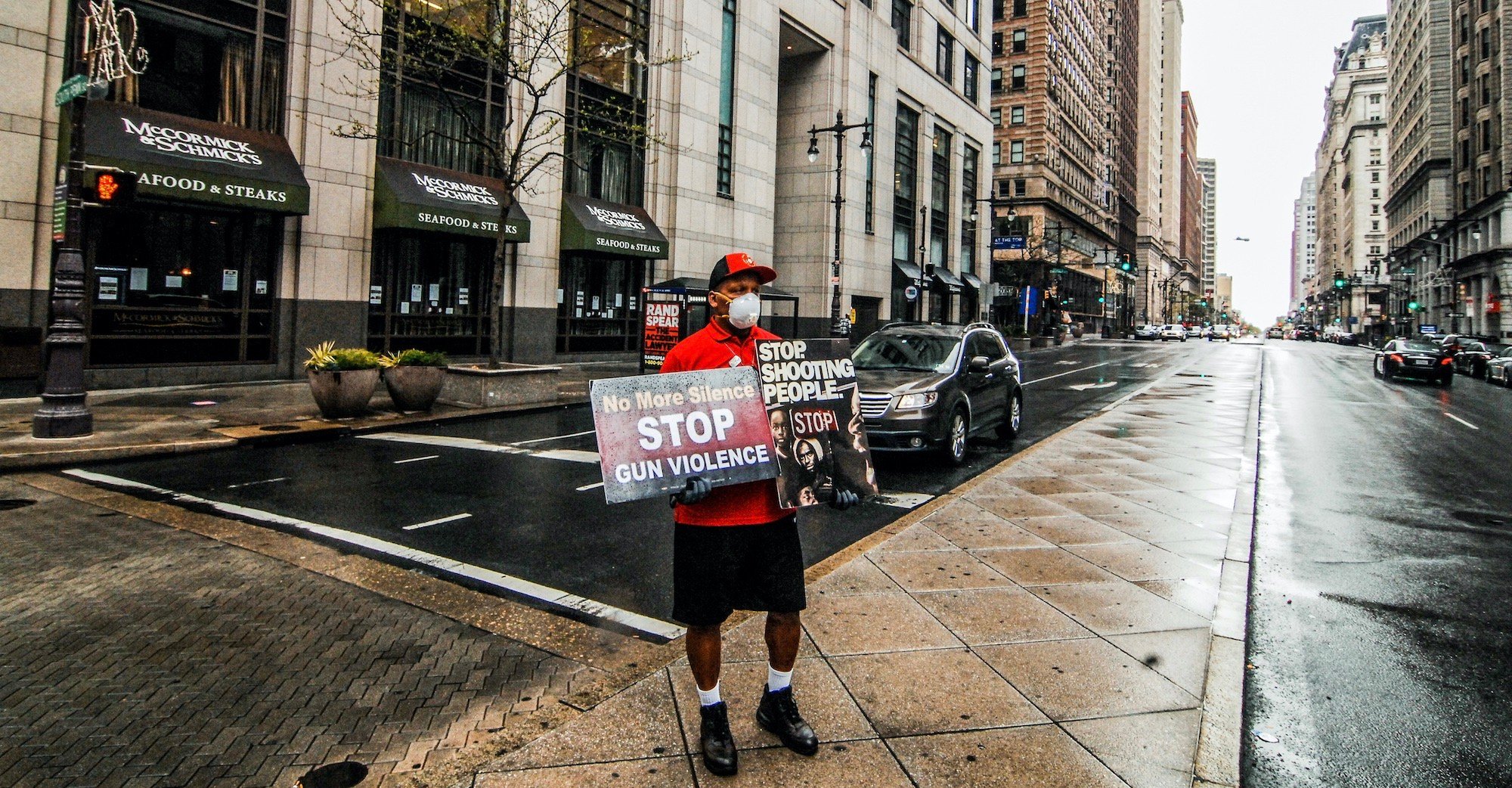The spread of COVID-19 has incited a vast level of fear and anxiety throughout our nation, inspiring a sense of powerlessness, economic insecurity, and corrosion of social support. As most of the country grapples with shelter-in-place orders, these conditions only exacerbate community instability, structural inequity, and the safety of vulnerable populations.
Nowhere is this more evident than in the persistence of violent crime. While overall crime has declined in many cities, the U.S. saw more than 2,100 firearm deaths between March and late April — the highest tally in that period since 2016. Nonfatal shootings also remain steady or have seen similar increases in places like Philadelphia, Chicago and Detroit. In these cities, areas where COVID-19 is spreading rapidly, black Americans were already 10 times more likely to die from gun homicide than white Americans before the pandemic.
In the face of a global crisis that will have an unprecedented impact on public health and the economy, public officials are responsible for decisions that fundamentally alter the trajectory of American life. Now is the time for our government to support organizations that provide the relationships, resources, and support to mitigate the repercussions of COVID-19 and address the prevailing epidemic of violence among our most vulnerable communities.
COVID-19’s impact on racial inequity and violence
New data from the Centers for Disease Control and Prevention indicates that African-Americans are at increased risk of hospitalization and death from COVID-19, largely due to pre-existing disparities in health, structural racism, and deeper inequities in health access and economic opportunity. These same structural inequities drive overlapping challenges of community violence. As COVID-19 hurls our country into an economic recession, the barriers to health, housing, and employment will disproportionately impact those who already had limited access to those resources before the pandemic. This results in a deep, compounding effect that will ravage already vulnerable communities.
In an interview on the American Health Podcast, Daniel Webster, the director of the Center for Gun Policy and Research at Johns Hopkins University, details the complex relationship between COVID-19, the economic downturn, and violence. The greatest vulnerability is not distributed evenly among those who fall on hard times but instead impacts those neighborhoods with the highest, most persistent concentration of economic distress.
Indeed, it is persistent inequity that drives violence. Those who experienced the greatest level of economic neglect before the pandemic are likely to bear the brunt of several crises at once: COVID-19, violence, and economic loss.
Addressing COVID-19 and violent victimization in vulnerable communities
As the pandemic spurs national, regional, and local responses, states and the federal government have an opportunity to leverage a workforce of frontline violence intervention workers, many of whom hail from communities affected by violence and have direct contact with those at a heightened risk of both COVID-19 and violence.
This workforce is embedded in a range of hospital-based violence intervention and street outreach programs that address community violence at its root. This work is fundamentally relationship-based: It leverages the credibility of workers to ensure that resources flow directly to those most impacted, in the areas most needed. Studies show that these approaches are effective at interrupting cycles of violence, decreasing injury recidivism and incarceration, and increasing employment. While much of this work has previously taken place in person, many programs are now providing services virtually to maintain safety. In Hartford, Connecticut, the Hartford Communities That Care response team has, in addition to interrupting violence, collaborated to create a food share outreach program that serves more than 200 families biweekly. In Philadelphia, the program Healing Hurt People has helped violently injured clients by pivoting to deliver counseling and peer support services virtually, as well as securing low-cost phones, internet, and data plans so they can access this life-saving care.
Additionally, violence intervention workers have been utilized in COVID-19 hotspots to help flatten the curve by educating their communities about the virus. In Boston, our violence intervention and prevention programs are supporting screenings at community testing sites focused on housing and food insecurity as well as interpersonal violence. They are also distributing COVID-19 “care kits” and boxes of food.
State and local governments are increasingly taking notice. Washington recently passed legislation to support violence intervention strategies, even amid the COVID-19 crisis. In Los Angeles, gang and crisis intervention workers are deemed essential emergency personnel under the city’s stay-at-home order. National organizations have also called for greater investment in violence prevention and intervention work, including Everytown for Gun Safety, the Alliance for Safety and Justice’s Stop the Spread campaign, Giffords Law Center to Prevent Violence, Cure Violence, and the Health Alliance for Violence Intervention, the organization I lead. Investment in these strategies helps pave the way for vulnerable communities to get the support they need from the people they trust.
More than ever, our national, regional, and local leaders need to prioritize policies and institutionalize resources designed to protect potential victims of violence. As federal lawmakers push to provide much-needed funding for victims of domestic violence, it is critical that victims of community violence also receive support. That means developing policies to adequately fund community violence prevention work, affirming this work as essential, and ensuring violence intervention workers have access to personal protective equipment. In doing so, we can empower those most affected by violence to emerge from this crisis with an increased sense of safety and strength.


